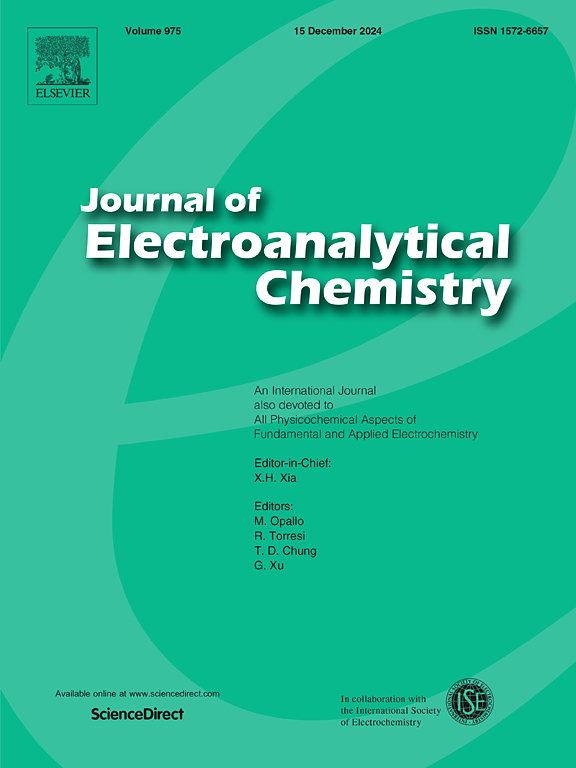Wood-derived cobalt nickel phosphide electrocatalyst as self-supporting electrodes for efficient overall water splitting
IF 4.1
3区 化学
Q1 CHEMISTRY, ANALYTICAL
引用次数: 0
Abstract
Biomass-based transition metal carbon catalysts have gained significant attention in water splitting due to their ability to enhance the electrocatalytic activity and chemical stability of the hydrogen evolution reaction (HER). However, designing and optimizing these catalysts as self-supporting electrodes remains a significant challenge. Herein, we developed a wood-derived cobalt‑nickel phosphide electrocatalyst as a self-supporting electrode by pretreating wood chips with gluconic acid-based proton ionic liquids (GILs), followed by carbonization, electrodeposition, and phosphating. The self-supporting electrodes with a stable three-dimensional nanosheet structure exhibited superior HER performance, achieving a low overpotential of 107.62 mV at 10 mA cm−2 and small Tafel slope of 79.52 mV dec−1 in alkaline solution. Furthermore, the assembled two-electrode electrolyzer exhibited a water splitting voltage of only 1.66 V at the current density of 10 mA cm−2. More importantly, the synergistic effect of phosphating bimetals significantly boosted electrocatalytic activity, leading to remarkable water splitting performance. This work introduces a novel approach for developing GILs, as well as providing a potential avenue for wood in the direction of self-supporting catalytic electrode.
木材衍生的磷化钴镍电催化剂作为高效整体水分解的自支撑电极
生物质基过渡金属碳催化剂因其能提高析氢反应(HER)的电催化活性和化学稳定性而在水裂解领域受到广泛关注。然而,设计和优化这些催化剂作为自支撑电极仍然是一个重大挑战。本研究通过葡萄糖酸基质子离子液体(GILs)预处理木屑,然后进行碳化、电沉积和磷化,开发了一种木材衍生的磷化钴镍电催化剂作为自支撑电极。具有稳定三维纳米片结构的自支撑电极表现出优异的HER性能,在10 mA cm−2时过电位低至107.62 mV,在碱性溶液中Tafel斜率小至79.52 mV dec−1。此外,组装的双电极电解槽在电流密度为10 mA cm−2时的水分裂电压仅为1.66 V。更重要的是,磷化双金属的协同效应显著提高了电催化活性,导致了显著的水裂解性能。这项工作为开发GILs提供了一种新的方法,并为木材的自支撑催化电极方向提供了一条潜在的途径。
本文章由计算机程序翻译,如有差异,请以英文原文为准。
求助全文
约1分钟内获得全文
求助全文
来源期刊
CiteScore
7.80
自引率
6.70%
发文量
912
审稿时长
2.4 months
期刊介绍:
The Journal of Electroanalytical Chemistry is the foremost international journal devoted to the interdisciplinary subject of electrochemistry in all its aspects, theoretical as well as applied.
Electrochemistry is a wide ranging area that is in a state of continuous evolution. Rather than compiling a long list of topics covered by the Journal, the editors would like to draw particular attention to the key issues of novelty, topicality and quality. Papers should present new and interesting electrochemical science in a way that is accessible to the reader. The presentation and discussion should be at a level that is consistent with the international status of the Journal. Reports describing the application of well-established techniques to problems that are essentially technical will not be accepted. Similarly, papers that report observations but fail to provide adequate interpretation will be rejected by the Editors. Papers dealing with technical electrochemistry should be submitted to other specialist journals unless the authors can show that their work provides substantially new insights into electrochemical processes.

 求助内容:
求助内容: 应助结果提醒方式:
应助结果提醒方式:


